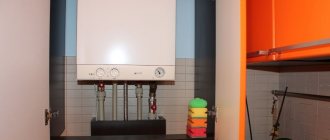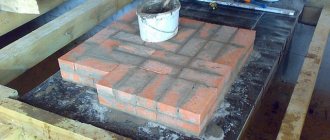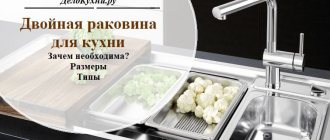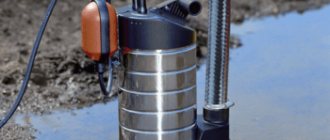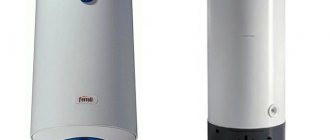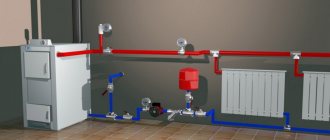The profitability of heating any room with gas equipment is influenced by the quality of the gas mixture, actual consumption and operating power.
The cost of equipment is also of considerable importance for organizing profitable heating.
In this case, all factors must be combined with the dimensions and appearance of the device as desired by the user.
For a tent - compact, for the street - powerful. That is, taking into account all areas of life of a modern person.
We suggest studying our rating, based on manufacturers' statements and reviews from real customers.
Rating of the TOP 10 best gas heaters for summer cottages for 2022
| TOP 3 best gas heaters by price/quality for 2022 | ||
| 1 | Ballu BIGH-55 | Find out the price |
| 2 | Bartolini Pullover I | Find out the price |
| 3 | NeoClima 08HW-BW | Find out the price |
| TOP 3 best gas heaters for garages and cottages | ||
| 1 | Ballu BIGH-3 | Find out the price |
| 2 | Solar gas GII 2.9 | Find out the price |
| 3 | Kovea Power Sense (KH-2006) | Find out the price |
| TOP 2 best outdoor gas heaters | ||
| 1 | Ballu BOGH-15E | Find out the price |
| 2 | NeoClima 09HW-B | Find out the price |
| TOP 2 best portable gas heaters for tents | ||
| 1 | Kovea Fire Ball KH-0710 | Find out the price |
| 2 | Kovea Handy Sun | Find out the price |
How to make a gas gun with your own hands - step-by-step instructions
Knowing the operating principle of the simplest gas gun, you can understand that making the same design at home yourself will not be a problem. The main thing is to select components. As a body, you can use either a piece of galvanized pipe on the outside, with a diameter of 100 mm (recommended - 200 mm ), and any primus stove will be suitable as a burner (preferably with adjustable fuel supply intensity to the burner). All this can be purchased at a construction or household goods store.
An example of the design of a simple gas gun that you can make yourself
Another nuance is forced convection . With a powerful gas flow, it is not necessary to install a system that will independently blow out heated air. The main thing is to use a pipe that does not have sealed ends, because in this case the air flow is created automatically (due to the difference in air temperatures at the ends of the cylinder).
If convection is still necessary, then a regular household fan is simply installed at the back of the pipe. The main thing is to adjust the rotation speed of the blades so that the air flow created does not lead to extinguishing the burner. As a rule, 200 - 300 rpm is sufficient.
Aluminum container as a gas gun. The advantage of this design is the high heat transfer coefficient. But the durability of this option is debatable.
In total, to create a gas gun with your own hands you need:
Step 1. Select a suitable case. Ideally, a steel pipe with a diameter of 200 mm and a length of at least 80 centimeters .
Deciding on the body for the gun
Step 2. Prepare a hole in the upper part of the pipe for installing a nozzle with a burner. This can be done using a step drill. The standard inlet for the nozzle is about 25 mm (then you can install a water tap, but a gas tap is recommended - they are structurally different).
We install a hole for the gas supply
Step 3. Mount the burner. All this is secured to a washer or coupling that is tightened on the outside of the pipe. A fire-resistant sealant (automotive sealant, the one used when installing gaskets in the cylinder block) must be added under all fasteners to avoid gas leakage and backdraft in the combustion chamber.
Installing the burner
Step 4. If necessary, install a fan behind the pipe. It is not necessary to make everything airtight, the main thing is to create a directed air flow.
The fan will contribute to a more directed heat flow
Step 5. Connect the resulting gun to a gas source (propane or methane - depending on the type of burner installed) and conduct a test run. Automatic ignition in such a system, of course, is not provided, so the burner will need to be started manually.
Having connected the cylinder with the lawn, we perform a test run
During a test run, the most important thing is to make sure that there are no gas leaks (recheck all connections), as well as that the burner is heating normally (it should not overheat, become covered with soot or turn red).
The test run and performance check are carried out outdoors and not indoors. But it should be remembered that such devices are very dangerous, so trying to make them yourself without proper experience is not the best solution. And when working with them, there must be someone nearby so that if any breakdown occurs, they can immediately turn off the device.
Kroll P 10, will be expensive, but the equipment from this manufacturer is very reliable
You should not use self-made heat guns specifically for heating. They are better suited for quickly drying a room or for heat treatment of surfaces (for example, to combat mold and mildew).
In industrial guns, a photocell is installed in the relay. It is thanks to this that when there is no fire inside the combustion chamber, the gas supply is also turned off. Making such a relay yourself will not be a problem either.
Video - DIY gas heat gun
The main criteria for choosing a gas heater
- It is generally accepted that 1 kW of thermal power can cope with heating an area of 10 square meters.
m. If we are talking about heating a room, then you should pay attention to the maximum power. The performance of the device depends on it. It is generally accepted that 1 kW of thermal power can cope with heating an area of 10 square meters. m. - Much depends on the time a person spends in the room.
When people periodically enter a heated room, catalytic heaters can be used. They are able to burn exhaust gases on the surface of the catalyst, which makes their operation silent and safe. - If you need to regularly heat your living space
, especially where there are children, it is better to use wall-mounted convectors. To install them, you will have to make a hole in the wall to intake air and remove combustion products. - In garages or on the streets,
ceramic models that emit infrared radiation are good sources of heat. With this heating method, it is not the air that is heated, but the objects around it. - On a hike
you can’t do without a compact heater that can be used for cooking. It should be light and compact, but at the same time productive. After all, the heat quickly leaves the tent.
Safety of use
Any gas equipment is a potential source of danger. Improper operation or malfunction of the device can lead to serious consequences: fires, smoke and even cylinder explosions.
Therefore, when purchasing a device, you need to pay attention to the protective systems:
- protection when the flame goes out, which ensures that the burner is turned off and the gas supply is stopped;
- Tip over protection – it turns off the gas supply when the device is tilted.
You need to use only reliable and serviceable equipment, branded hoses and reducers, so that there is no accidental gas leakage.
The heating regulator will not be able to protect the cylinder from explosion. However, the risk of emergency situations can be reduced by, for example, never touching with oily hands or spilling oil on the cylinder.
Safety is 90% dependent on human actions. Safety precautions must always be followed. It is strictly forbidden to leave cylinders, gas convectors and heaters unattended, or place them near other heated bodies, flammable objects and liquids. Children should not be allowed to touch the heater, much less play near it.
Which brand of gas heater is better to choose?
The leaders in this ranking are Russian and Korean manufacturers, however, each of the brands represented in the TOP offers a good price-quality ratio.
We present the manufacturers of the best gas heaters:
- Kovea is a Korean manufacturer that started operating in 1982 and specializes in creating equipment for tourism. All of its products are manufactured in factories in South Korea. The company's products have been presented on the Russian market since 2002. The advantages of the company's gas heaters include economical fuel consumption, absence of unpleasant odors, quiet operation, and neat dimensions.
- Solarogas - the company supplies the market with more than 5 different models of gas-powered heaters. Among them there are several options with infrared radiation, which guarantees fast and safe heating of the air. On average, they increase the room temperature within 10-20 minutes after turning on the device
- Ballu is an industrial concern with powerful production potential. He has outdoor gas heaters, the advantages of which are: a rapid increase in air temperature, ease of movement due to the presence of rollers, and the possibility of remote control, depending on the specific model. They are also chosen because of their flame height up to 1.5 m and power output of up to 13 kW.
- Bartolini - under this brand various equipment is sold, including for heating residential and non-residential premises. It has both outdoor and indoor gas heaters with best performance, safe and efficient infrared. They are distinguished by their low weight (about 2 kg), economical fuel consumption (about 400 g per hour), and a wide operating temperature range - from -30 to +40 degrees Celsius.
- NeoClima is a brand under which climate control equipment is sold. The company's motto is “Quality for everyone.” Its gas heaters have proven themselves to be economical in terms of fuel consumption, lightweight, and easy to operate. They are also chosen because of the optimal price-quality ratio.
Operating principle of the device
The operating principle of the heater is very simple and is based on the basic laws of thermodynamics. All processes are explained by the design of the device.
In general terms, when describing the operating principle, the main aspects can be identified:
- The gas from the cylinder enters the reducer, where the propane pressure is reduced, after which it safely enters the heater nozzle.
- The gas is mixed with air, and the total mixture enters the ceramic panel.
- The gas burns evenly, so there are no by-products - ash, smoke, fog, carbon monoxide.
- The gas heats the ceramic element, which transfers heat through infrared radiation - glow.
The device evenly heats the air and surrounding objects, therefore it has very high efficiency. The heater can be used in an apartment, cottage, garage, tent and even outdoors. Depending on the specific application, the dimensions of the device may vary.
The gas air heater consists of the following elements:
- metal case;
- heat exchanger;
- divider;
- automatic control unit;
- gearbox
The use of heaters has a number of features. In order for the device to heat the maximum area, it must be placed high above the floor surface. Only the illuminated part of the space is heated. It is also very important to follow safety precautions during operation. This will be discussed in detail at the end of the article.
Customer Reviews
Sergey Aleksandrovich
Ballu BIGH-55
Pros: Convenient. Disadvantages: Haven't found it yet Comment: I ordered the heater on Yandex. It was packed well. Maybe the design of the rear limit panel fastening has been corrected. But there were no problems. The lower screws are easy to put on, but the upper ones are already accessible and easy to tighten. First launch - 10 minutes. This is logical - after all, you need to put air from a cylinder (I had a new one). The instructions are conveniently attached to the top. Everything is basically clear. I realized that the first mode switches to the second or immediately to the third. From the second to the third it does not flare up. When purchasing, I did not expect a miracle from the heater. I need it to quickly heat the room while we heat the main stove in the morning. Since it gets warm quickly, we have a warm morning. As soon as the main one heats up, turn off the heater. Because I think that gas consumption will not be significant. I also put a heater in the hallway (it’s cold here), direct it to the shower room and it becomes warm there. So for those who need fast, local, mobile heat, I recommend purchasing it.
Alexander Tyapkin
Bartolini Pullover I
Advantages: Appearance, compactness, easy to move and connect. Disadvantages: Smells of gas during the entire combustion Comment: In general, I am satisfied with this gas heater, it heats very well and does not waste electricity, but due to the smell of gas it is not at all comfortable (I only use it at maximum power so that it works less time, literally until the stove has warmed up, heating it for more than a couple of hours a day is problematic, and ventilating it while heating is pointless, in general, a vicious circle. A specific thing, I’m a little disappointed, it seems that we didn’t manage to save much on electricity as a result. PS As a result, there was a strong smell gas hose, when they changed the smell decreased, but remained.
Elena E.
Bartolini Pullover I
Super heater! On the 1st plate there is no smell of gas at all, on the 2nd plate there is just a little smell, on the 3rd plate the smell of gas is very obvious, but if the room is ventilated or there is ventilation, then this is the best solution for how to quickly heat a paddock house or something similar without consuming a lot of electricity Advantages: External appearance, compactness, easy to move and connect. Disadvantages: None Comment: The fireplace is nice, easy connection, no problems moving around the house. Heats 80 m2 without problems, we maintain the temperature at minimum. Almost silent. My parents (retired people) are very happy, it turned out to be easy to use for them, which is very important for me))) not to waste time on unnecessary explanations))). Placed in the hallway at the entrance, the heat is distributed throughout the house.
Vladimir Shmoilov
Ballu BIGH-55
Advantages: For summer residents, this is the best purchase, we bought it to heat the kitchen (attached to the house and is located outside the heating zone of the main stove), it was tested this winter (if it was winter), even in mode 1 it holds heat well, warms up to full 20 m\2. in 20-30 minutes. Disadvantages: Very long first start-up. Those who decide to buy and use it, don’t be alarmed, it took me 40 minutes to start completely the first time, but after the ceramics were completely calcined, subsequent starts were very fast. And even when installing a 27 liter gas cylinder inside. There is a bar that fixes the cylinder, so keep in mind that to fix it in place with screws you need a short Phillips screwdriver and thin hands. Comment: I advise you to write about the smell; in my opinion, the smell of gas from a gas stove for 30-40 seconds at startup is not critical.
Alexey Borisov
Ballu BIGH-3
Pros: Very powerful. Folds compactly. The kit includes a gearbox (not made in China) and an oak hose. Disadvantages: There is no regulator or just gas shutoff. Comment: The reducer is not suitable for classic metal cylinders, but for composite cylinders, they need their own reducer. The cylinder is standing outside, you have to turn on the reducer and run (well, walk quickly) into the tent to light the gas that is already coming from the stove. In my opinion, it would be better, instead of a reducer, to shut off the emergency gas on the heater or nearby. I sleep in a tent with him, ventilation and carbon monoxide detectors are required. I heat the kettle on it. But it is imperative that the kettle or pan does not completely cover the entire surface; it is better to move it not too much so that there is access to fresh air, because. The flame starts to burn less brightly and the gas burns out, and the CO sensors immediately go off.
Alexander Nezvidsky
Solar gas GII 2.9
This heater heats just like a big expensive one, because the area of the ceramics and the gas outlet are the same, the whole difference is in the design and configuration, this heater does not have a gearbox (300-500) rubles and a hose 200 rubles, a regular gas one is suitable (one end We cut off the other one onto the gearbox and pull it onto the heater nozzle, I recommend squeezing it with a clamp for those especially nervous, although everything fits tightly anyway) it’s ready. The CO2 output is minimal and is safe with natural ventilation. I’m heating the garage, in an hour I can heat up 18 m/² to plus 16 with 0 outside the gate. Another 2 kW of wind helps with it in an hour 20 plus at 14 minus outside, it will still depend on the energy efficiency of your room, if you cannot achieve such indicators, think about insulating the room. By consumption: 18 liter composite cylinder with 14 liters of refill, enough for a week when using the heater 5-6 hours a day. Refilling 14 liters costs 430 rubles.
Alexey K.
Ballu BOGH-15E
Advantages: Well made in appearance, moderately beautiful, while new, easy to light, good lighting, has a heating effect up to +12-15, moves quite easily on wheels. Remote controller. Disadvantages: At temperatures below 12, it rather serves a decorative function. Well, you can still stand close to him to warm up. Moisture protection only IP44, i.e. You can’t leave it outside without a roof, which is strange for an outdoor heater. It rusts quickly - only a few parts are stainless steel (frame and canopy), everything else is painted/galvanized. When moving on paving stones, it rattles loudly at every joint. You need to additionally buy a cylinder (a normal one costs 8 thousand) + a cover (4 thousand). Unstable with the cover on! With a small gust of wind, he fell on his side. Comment: In general, I have long wanted such a device to extend the warm season. And I took the version with a remote control so that members of the household could easily turn it on. The fire looks impressive, it’s comfortable to sit next to it, the warmth is felt at 2.5-3 meters at +20, at +15 and below - you need to sit very close or wear clothes appropriate for the weather.. A 25 liter cylinder is filled with 20 liters of gas, but in fact, when there are 5 liters left in the cylinder, the flame becomes very small even in max mode. 15 liters at maximum (and less - purely for lighting only) mode is approximately 8 hours of work. I don't have a canopy - so it needs to be covered with a cover every time, and in the cover it is unstable even with a full gas tank. And a fall on the paving stones will most likely be fatal for him. The problem is serious: it must either be tied or screwed to the floor. In addition, the device rusts and, if you do not exclude moisture, it will rust anyway. People's grilles rust completely within a year. Rust begins to ooze from the joints (where the galvanizing/painting is damaged during assembly) after the first rain. Even during the selection process, it was difficult to find information why BOGH-15E costs 15 thousand more than BOGH-15. I answer - in 15E there is electronic control of the burner, i.e. ignition and adjustment of the flame - using buttons (on the block or from the remote control), at 15 - just turn the gas supply knob and press the piezoelectric element button to ignite. Essentially, this is a device for commercial use. There is a wow effect for guests. PS. The reviews all around are clearly custom-made. Everywhere there is a list of “advantages” from the instructions (such as fall protection, cold grille, sharp edges that cut your hands during assembly, heating at 2.5 meters, etc.). But still, the device is cool and if this is not the last 60 thousand in your life, buy it!
Zhenya M.
Ballu BIGH-3
Advantages: independent of electricity. Compact and lightweight. You can power it from the cylinder or from the main line, just replace the jets. Enamel with heat-resistant coating. Power is regulated smoothly. Disadvantages: none identified yet Comment: We often go hunting and fishing with friends. I bought this useful heater and now I won’t part with it. When assembled, it doesn’t even take up much space in the trunk. I easily used it to warm a tent and a room at the dacha when it was cold. It doesn't use a lot of gas. We cooked fish soup on it more than once and made coffee in the morning. The burner is made of ceramic, it is not afraid of water. A thermocouple is installed here for protection; if the flame goes out, the gas supply stops.
Marat I.
Ballu BOGH-15E
Advantages: I’ve been using it for about 3 weeks, I bought it in St. Petersburg through the Teplotekhnika store (I also recommend it, the guys delivered the purchase on the day of the order and provided prompt support after the purchase, which is rare today). This outdoor fireplace is not cheap (I took the “E” model, i.e. with a remote control), but it is really worth the money. As an engineer, I was happy for the Russian engineers (although the Ballu company is Chinese, this fireplace was designed and made in Izhevsk), since everything was designed and executed at a high level. You see this when you start putting together long elements or volumetric elements (like a roof) and you realize that everything fits together exactly and is fastened securely - well done. Stainless steel elements look impressive and beautiful after removing the protection. The nice thing is that, unlike my expensive Canadian grill, here you don’t have to rotate the gas cylinder in the air to attach it. Overall, I definitely recommend it. If you have limited finances, you can take a model without a remote control - it will also bring pleasure, but with a remote control it is of course more convenient. Disadvantages: Probably the radius of 2.5 meters is overly optimistic, but at 2 meters the fireplace heats well. Let's wait for the cold weather, it will become clearer, maybe I'm wrong. Comment: Manufacturers included gloves in the kit - I advise you to use them, because... The edges of the metal elements are sharp in places. When I accepted the goods from the courier, I decided to check the integrity of the glass flask and cut my hand. Of course, I did the assembly while wearing gloves, as recommended by the factory))
Konstantin M.
KoveaPower Sense (KH-2006)
Advantages: Turns on almost the first time, easily, smoothly. Well made, good body materials. Smooth power (heat) adjustment. Lightweight, compact, very nice design. Disadvantages: Doesn't warm up very well (small room, 16 meters, outside temperature is about -1, -3, after 30-40 minutes of work it almost didn't warm up, but it was still possible to be in it, although not comfortable if you sat next to it and warm your hands from above - you won’t get cold). At low temperatures (at -20) it does not turn on. The body is smaller than the collet cylinder, and therefore the cylinder sticks out of it, which looks strange and unsafe. Comment: In general, the impressions are not bad, the product is quite suitable, just the application is very limited. They cannot warm up a tiny garden wooden house. Maybe a 2*2 kennel... But I don’t regret it, before this there were heaters of this type, they quickly broke down. This one works great and always lights up right away.
Igor Ch.
Kovea Fire Ball KH-0710
It heats perfectly, you can heat it up, to the side and down. Gas burns more completely than in a simple stove, is used economically, and is not very noisy at low gas. truck overnight. There was no discomfort in the morning. Can be used as a cooking plate. Disadvantages: Useless in a breathable tent at minus 15 degrees. Doesn't warm up the room. The price is very high, I realized after testing. Convenient, compact. The consumption is small. It might come in handy in a tent in cold weather.
Calculation of power by volume
This type of calculation is more accurate because it takes into account the height of the ceilings. The ratio that is taken when calculating the heat load is that to heat 1 m3 of the total volume of the room, 40 W of heat will be required.
Algorithm for determining power by room volume:
- Use a tape measure to measure the height, length and width of the room and determine the volume.
- Multiply the resulting value by 0.04 and get the recommended thermal power.
- Correction factors for insulation, glazing, and type of room are taken into account.
By performing the calculation, you can make sure that the efficiency and economy of heating largely depends on the level of insulation and glazing of the house, so the owner should be interested in carrying out insulation work and replacing double-glazed windows with energy-efficient ones.
Calculation of gas consumption
After determining the thermal power, they begin to calculate gas fuel for heating needs, on natural gas, they perform it according to the formula: L = Q / (qH x 0.90), where: L is the volumetric indicator of hourly gas consumption per 1 m3/hour; Q – design power of the convector, kW; Q ng – lower calorific value of natural gas, for main gas it is equal to 10.2 kW/m3; 0.95 – convector efficiency. For the above example, heating a house with an area of 150 m2 and a maximum thermal load of 15 kW, the calculation is:
15 / 10.2 x 0.95 = 1.54 m3 / h of natural gas.
Gas consumption per day is 1.54 x 24 = 36.96 m3, and
Monthly consumption – 36.96 x 30 = 1081 m3.
Review of popular models
Analyzing information on thematic forums, we can identify the following popular gas burners among Russian consumers:
- MASTER BLP 17M . Ideal for heating a garage. Reliable and durable equipment, the reducer is “unpretentious” to the quality of the supplied gas. There is a power regulator from 10 to 16 kW, so it is suitable for garages up to 150 m2. The only negative is manual ignition, although because of this the device almost never breaks down; the manufacturer generally gives a 3-year warranty. The average cost is 9 thousand rubles.
- SPECIAL IGE-15 . Russian-made gun. It is small in size and suitable for use when installing suspended ceilings or for drying walls after painting. Power is 15 kW, but the flow is narrowly targeted. It has 2 heating stages, the kit includes a hose for connecting to the cylinder (with adapters). The average price is 5.2 thousand rubles.
- Caliber TPG-10 . Also made in Russia, power up to 10 kW, suitable for small spaces. The gearbox is collapsible, the manufacturer has provided for its complete replacement with an analogue one. The fan is also serviceable and not pressed into a bearing. But the functionality is minimal. But the cost is only 4 thousand rubles.
- Kroll P 10 . Popular model of foreign production. It works when connected to cylinders, there is a piezo ignition, a safety thermostat and a pressure sensor. The productivity is small - up to 300 m3 per hour, but the flow of heated air is not narrowly targeted, as in other models. The average price is 9.5 thousand rubles.
- Profteplo KG-57 . Industrial type heat gun with a capacity of up to 1400 m3 per hour. Available in two versions - with connection to 220V and 380V. The latter is noisy in operation, but it is not suitable for small spaces. There is flame control, as well as a sensor that turns off the gun when it detects movement in front of it (it can be forcibly turned off). The average price is 11 thousand rubles.
MASTER BLP 17M, one of the best selling models
We recommend our article on the topic - Heating boilers for a private home, where we examined the principle of their operation and how to start the heating system step by step.
In summary, a gas gun is an excellent option for quickly warming up non-residential premises. For residential use this is not the best option, as it requires connection to a chimney. But you can make a cannon yourself; all this will require only 2–3 thousand rubles (for all materials).
